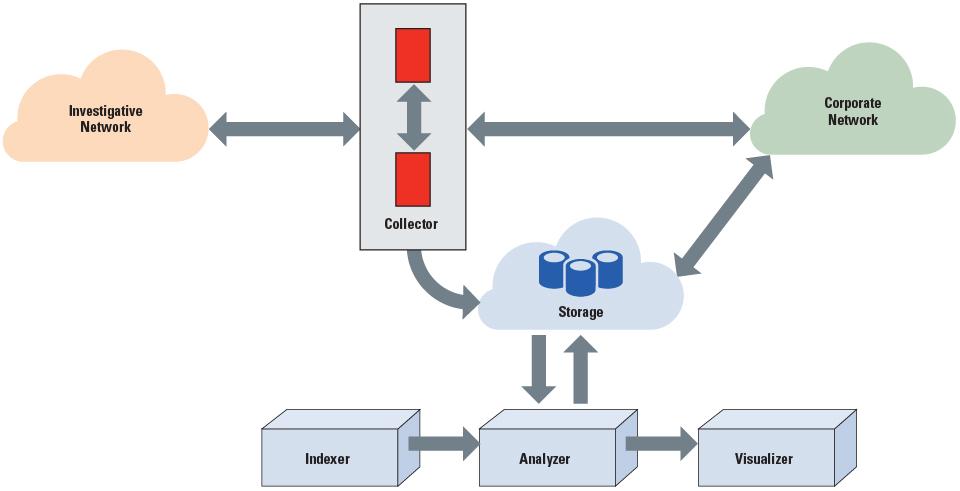Exhibit 2. How FileTSAR Works
FileTSAR is connected to the large-scale computer network via the collector, which implements two distinct operational components: a trigger engine and a capture engine. The trigger engine monitors all available network traffic flowing into and out of the network and indicates when specific criteria occur in those network flows.
Based on the criteria for the specific digital forensic investigation, multiple options exist. Those criteria can spawn an event that will initiate the capture engine to record the network data. Both the trigger engine and capture engine will output data in an industry-accepted format that is compatible with existing incident response systems, and provide a standardized interface into the storage system and indexer module.
The indexer takes input from the collector and processes it for file contents. The data are archived into the active case directories within the storage subsystem and can be explored, searched, and visualized later. The analyzer identifies the interrelatedness of files, flows, packets, users, and timelines. The analyzer also reconstructs documents, images, email, and Voice over Internet Protocol. The visualizer identifies trends, patterns, or repetitions. It contains a web-based dashboard, accessible only by authenticated users.


